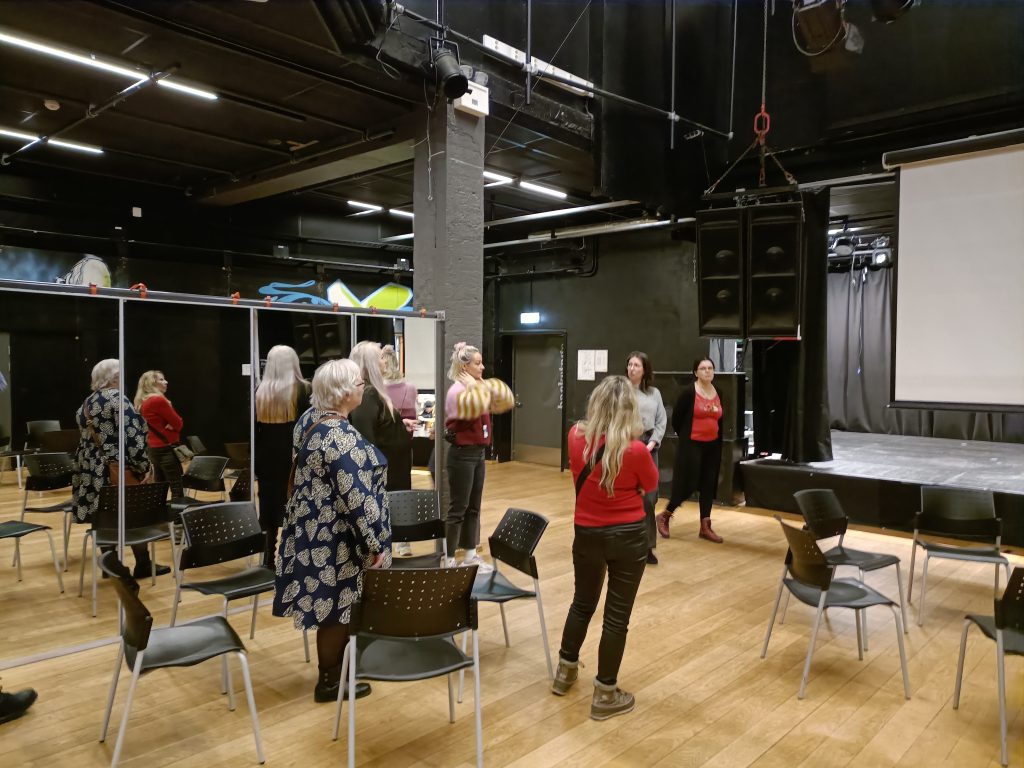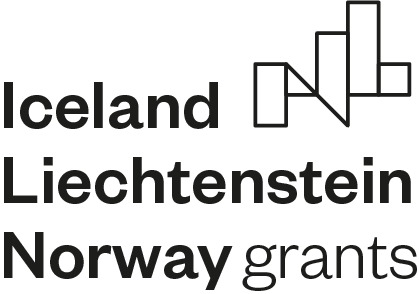
Ajavahemikul 06.-09. veebruar 2023.a toimus projekti “Lääne-Viru maakondliku integreeritud teenusmudeli väljaarendamine koolist väljalangemise ennetamiseks” õppevisiit Norra Kuningriiki, Agderi maakonda (Lõuna-Norra, Kristiansand ja Vennesla) eesmärgiga tutvuda sealsete parimate praktikatega koolist väljalangemise ennetamisel. Saadud teave ja kogemused on sisendiks kohaliku tasandi integreeritud teenusemudelite väljatöötamise protsessis.
Esimesel päeval toimus seminar Agderi maakonna administratiivkeskuses, kus anti ülevaade uuringust „Ungdata“, mille abil uuritakse noortelt iga kolme aasta järel nende heaolu kohta (tervis, pere, sõprussuhted, elutingimused, rahulolu jne). Uuringud on aluseks maakonna tegevuste planeerimisel.
Lisaks jagati teavet noorte tugila ning süsteemse nõustamis- ja märkamissüsteemi kohta (kaasatud 18 kooli).

Agderi maakonnas on kokku 25 omavalitsust ning algatatud on programm „Vårt Agder/Our Agder“, mille eesmärgiks on parandada valdkondadeülest koostööd.
Tutvustati siinse projekti “Lääne-Viru maakondliku integreeritud teenusmudeli väljaarendamine koolist väljalangemise ennetamiseks” eesmärke ning senist kogemust. Päeva teises osas külastati Norra suurimat noortekeskust Samsen, mis üllatas väga mitmekülgsete võimalustega- tantsuringid (sh postitants), muusika (sh helistuudio), kunst, filmistuudio, fotograafia, kaljuronimine, parkuur, kontserdid, festivalid, üritused. Enamik tegevusi on noortele tasuta.

Teisel päeval külastati Vennesla Keskkooli (kutsekooli) ning anti ülevaade sealsest pilootprojektist „Vennesla Bridge“ (alates 2019), mille eesmärk on ennetada koolist väljalangemist, toetada noort edasiste valikute tegemisel (kutseõpe, töötamine). Projekt on olnud väga edukas ning mõne aasta jooksul on tuge saanud 109 õpilast. Projektis osalemine on noore jaoks vabatahtlik ning meeskonnas on kokku 5 nõustajat. Suurima riskikohana toodi välja üleminek ühest kooliastmest teise (põhikoolist keskkooli). Norras alustavad lapsed kooliteed 6.aastaselt ning keskhariduse omandamiseks kulub 13 aastat.

Seejärel liiguti vanas paberivabrikus asuvasse keskusesse NAV (The Norwegian Labour and Welfare Administration, Eestis samalaadsed asutused eraldi: Sostiaalkindlustusamet, Töötukassa, Tervise Arengu Instituut ja Tervisekassa), kus tutvustati sealseid tööpõhimõtteid ning jagati kogemust NEET-noortega töötamisel. Näiteks sellest aastast alates rakendavad nad lisaks muudele tugedele NEET-noorte tugigruppi, kus töötatakse noortega grupitöö meetodil.
Tutvuti ka maailma ilusaimate hoonete hulka valitud Vennesla kultuurimaja/raamatukoguga. Raamatukogu on Norras kogukonnakeskus ning on olulisel kohal erinevate vanuserühmade elus. Lisaks muudele suurepärastele võimalustele on raamatukogust võimalik tasuta laenutada näiteks talispordivarustust. Ootamatu vaatepilt eestlaste jaoks.

Õhtupoolikul külastati Punase Risti noortekeskust, mis on avatud kolmel korral nädalas ning kus lisaks vaba aja veetmise võimalustele pakutakse sooja õhtusööki (noored ise aitavad valmistada). Punase Risti noortekeskuses töötavad enamasti vabatahtlikud.
Lahkumispäeva hommiku külastati Kristiansandi Linnavalitsust, kust saadi teavet alushariduse kohta. Norras käivad peaaegu kõik lapsed alates 1.eluaastast lasteaias ning vanematel tuleb selle eest ise tasuda. Väga olulisena toodi välja põhimõte „Mitte laps ei pea sobituma asutusega, vaid asutus lapsega“. Ehk siis kaasava hariduse põhimõttest lähtuvalt on suur osa lapsi nii lasteaedades kui koolides kaasatud ning tagatakse igale lapsele parimad võimalused. Psühholoogilist, eripedagoogilist, terapeutilist, logopeedilist jms abi osutavad spetsialistid ei asu enamasti lasteasutustes koha peal, spetsialistide meeskonnad osutavad oma teenuseid vastavalt vajadusele.
Suurimad tänud vastuvõtjatele (Inga Lauvdal, Lars Holmer-Hoven) ning väga meeldivatele projektikaaslastele, õppevisiit sujus tänu teile suurepäraselt!

IN ENGLISH: STUDY VISIT TO SOUTHERN NORWAY
In the period 06th-09th February 2023, the study visit of the project “Development of Integrated Service Model for Prevention Work with Children at Risk of Dropping out of School in Lääne-Viru County“ took place in the Kingdom of Norway, Agder county (Southern Norway, Kristiansand and Vennesla) with the aim of getting to know the best practices there in preventing school dropout. The information and experiences gained are input in the process of developing integrated service models at the local level.
On the first day, a seminar was held in the administrative center of Agder County, where an overview of the “Ungdata” survey was given, with the help of which young people are asked every three years about their well-being (health, family, friendships, living conditions, satisfaction, etc.). The studies are the basis for planning the activities of the county.
In addition, information was shared about the youth support and the systematic counseling and notification system.
There are a total of 25 municipalities in Agder County, and the program “Vårt Agder/Our Agder” has been initiated, the aim of which is to improve cross-sectoral cooperation.
The goals of the project “Development of Integrated Service Model for Prevention Work with Children at Risk of Dropping out of School in Lääne-Viru County“ and the experience so far were presented. In the second part of the day, the largest youth center in Norway, Samsen, was visited, which surprised with very versatile possibilities – dance circles (including pole dance), music (including sound studio), art, film studio, photography, rock climbing, parkour, concerts, festivals, events. Most activities are free for young people.
On the second day, the Vennesla Secondary School (vocational school) was visited and an overview of the pilot project “Vennesla Bridge” (starting in 2019) was given, the purpose of which is to prevent dropping out of school, to support young people in making further choices (vocational education, employment). The project has been very successful and 109 students have received support within a few years. Participation in the project is voluntary for the young person, and there are a total of 5 counselors in the team. The transition from one school level to another (primary school to secondary school) was pointed out as the biggest risk point. In Norway, children start school at the age of 6, and it takes 13 years to complete secondary education.
Then we moved to the center NAV (The Norwegian Labor and Welfare Administration, similar institutions in Estonia separately: Social Insurance Board, Töötukassa, Tervise Anergu Instituut and Tervisekassa), located in an old paper factory, where the working principles there were introduced and the experience of working with NEET youth was shared. For example, starting this year, in addition to other supports, they implement a support group for NEET youth, where they work with young people using the group work method.
We also got to know the Vennesla cultural house/library, selected as one of the most beautiful buildings in the world. The library is a community center in Norway and plays an important role in the lives of different age groups. In addition to other great opportunities, it is possible to borrow, for example, winter sports equipment from the library for free. An unexpected sight for Estonians.
In the afternoon, the Red Cross Youth Center was visited, which is open three times a week and where, in addition to leisure opportunities, a warm dinner is offered (the young people help to prepare it themselves). The Red Cross Youth Center is mostly staffed by volunteers.
On the morning of the departure day, Kristiansand City Hall was visited, where information about early childhood education was obtained. In Norway, almost all children from the age of 1 go to kindergarten, and parents have to pay for it themselves. The principle “It is not the child who needs to fit the institution, but the institution with the child” was highlighted as very important. In other words, based on the principle of inclusive education, a large number of children are included in both kindergartens and schools, and every child is guaranteed the best opportunities. Specialists who provide psychological, special educational, therapeutic, speech therapy, etc. assistance are mostly not located in children’s institutions, teams of specialists provide their services as needed.
The biggest thanks to the hosts (Inga Lauvdal, Lars Holmer-Hoven) and very pleasant project partners, the study visit went perfectly thanks to you!


